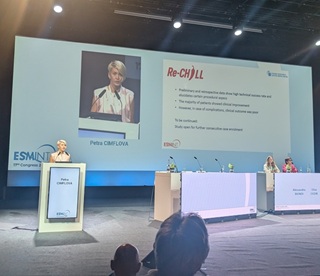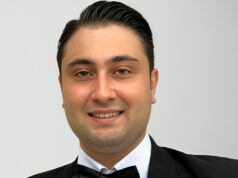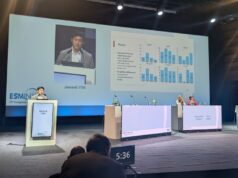
Endovascular therapy (EVT) appears to be a technically feasible approach that may also produce positive clinical outcomes in the treatment of symptomatic intradural chronic total occlusions (CTOs), according to Re-CHILL study findings disclosed for the first time at the 2025 European Society of Minimally Invasive Neurological Therapy (ESMINT) annual congress (3–5 September, Marseille, France) by Petra Cimflová (University Hospital of Bern, Bern, Switzerland).
Early on in her presentation, Cimflová highlighted the importance of distinguishing between extradural/cervical and intradural CTOs. While endovascular treatment of the former—as an alternative to bypass surgery—is relatively well established and can be done using a variety of techniques, the latter is more complicated, as re-entry through the subintimal passage is not an option, collateral flow heightens the likelihood of distal embolisation, and the presence of local side branches means there is an increased risk of the ‘snowplough’ effect.
“Is there evidence that we can treat these patients safely?” Cimflová queried. “Well, despite a couple of case series [being published], there’s still no common agreement on how they should be treated.”
Against this backdrop, Cimflová and her colleagues in Bern—in close cooperation with the Alfried Krupp Clinic in Essen, Germany—conducted the Re-CHILL study, prospectively collecting cases from a number of centres across the globe and reviewing them retrospectively. The study focused specifically on symptomatic intradural CTOs involving the internal carotid, middle cerebral, vertebral or basilar arteries, and sought to assess the feasibility, safety and clinical outcomes associated with EVT in this patient population. According to Cimflová, only a select few centres have started to approach this condition endovascularly to date.
The presenter noted that, thus far, 25 cases (median age, 65 years; 72% male) from a total of six centres have been collected and analysed, with 18 of these patients having a prior history of stroke or transient ischaemic attack (TIA). She also relayed that the median time period from symptom onset to treatment was 10 days, and five patients were treated more than 30 days after their initial presentation.
Regarding the nature of the EVT that these 25 patients received, Cimflová said that all of the procedures were conducted under general anaesthesia, and the majority utilised “regular” microcatheters and “standard” microwires—with only a handful of cases involving CTO-dedicated wires. There was only one instance of technical failure in which the operator was unable to pass the occlusion. Additionally, the vast majority of cases—22 out of 25—were treated using a stent, with most of these being laser-cut as opposed to braided device types, and just two cases were treated via balloon-based percutaneous transluminal angioplasty (PTA).
Cimflová also highlighted the early outcomes observed from days 1–10, stating that 17 out of 25 patients experienced clinical improvements, while five remained unchanged versus baseline and three worsened clinically. In one of these cases, the patient died two days after the procedure; one involved a basilar artery dissection; and one experienced severe occlusion of a stent in the middle cerebral artery with a subsequent intracranial haemorrhage (ICH).
“When it comes to periprocedural complications, what we fear most are intracranial dissection and distal embolisation—and each of these occurred once,” the presenter added.
Further early outcomes Cimflová touched on included two ICH occurrences, one of which was symptomatic, while three new infarcts were observed across 23 patients with sufficient imaging data. And, within the 21 cases that employed a stent, the device remained patent in 19.
“Preliminary results from the Re-CHILL study show a high technical success rate and elucidate certain procedural aspects [in the endovascular treatment of intradural CTOs],” the speaker commented. “The majority of patients showed clinical improvements—however, we need to be aware that, in cases where there were any complications, the clinical outcome was poor.”
She concluded by averring that “this is not the end of the story”, as the Re-CHILL study remains open and plans to collect more cases moving forward, with antiplatelet drug management and long-term outcomes being among future areas of interest.










